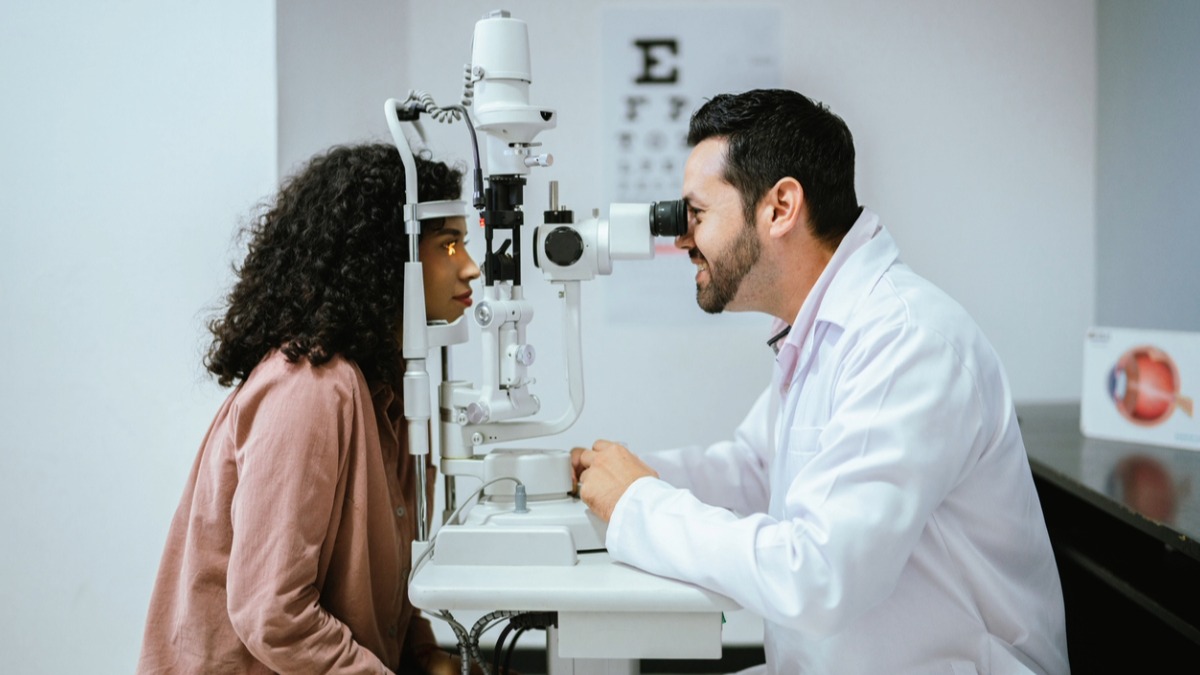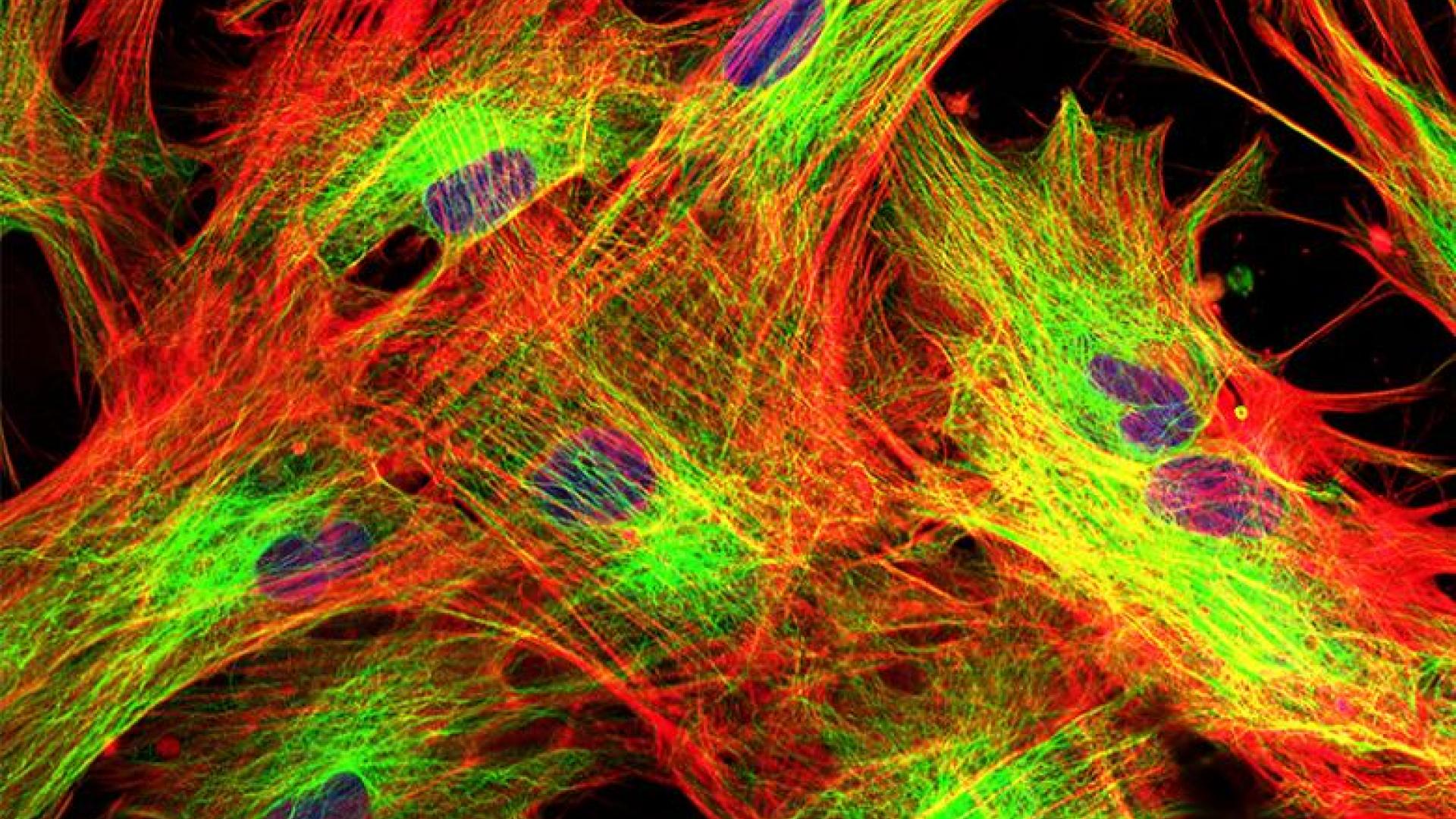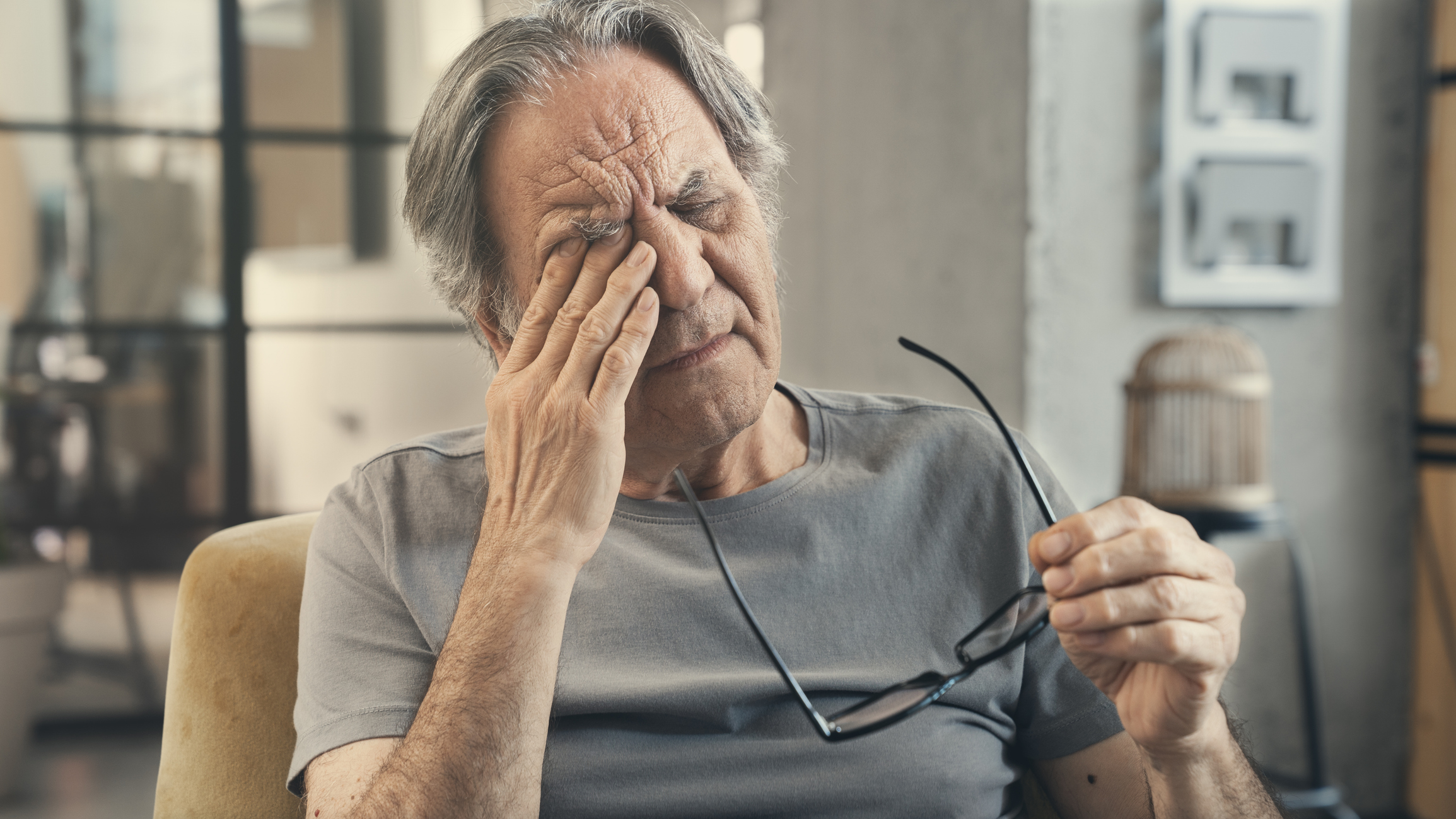
There are a number of important questions that should be discussed with your eye doctor before beginning glaucoma treatment. This article discusses the main findings of the Ocular Hypertension Treatment Study and how it may help you and your eye doctor decide if beginning treatment is the right decision for you.
To Treat or Not to Treat: That is the Question
You’ve gone to your yearly appointment with your eye doctor and had a comprehensive, dilated eye examination, as recommended every one to two years for older adults. In addition to updating your eyeglass prescription, your doctor tells you that your eye pressure reading is borderline “high.”
Chronic elevated eye pressure (called intraocular pressure, IOP) is one of the major risk factors for glaucoma. You and your doctor need to decide whether you should start treatment.
- How does one decide?
- Does treatment with eye pressure-lowering medications actually work and decrease your risk of developing glaucoma?
- What are the risk factors or specific findings from your eye examination that might make you higher risk vs. lower risk for developing glaucoma?
- Is there a risk in delaying treatment?
Guidelines Provided by the Clinical Trial
The questions mentioned above were answered by a randomized controlled clinical trial (the gold standard of clinical trials) sponsored by the National Eye Institute of the National Institutes of Health: the Ocular Hypertension Treatment Study (OHTS), and are reviewed below. After all, treatment for glaucoma is often lifelong, so the decision to start treatment is not always an easy one. An important caveat to interpreting the results of any clinical study is to understand the types of patients enrolled in the study. To learn more about the participants of the OHTS, please see the details at the end of this article.
The Trial Results
The OHTS was the first randomized clinical trial to demonstrate that treatment with eye pressure-lowering medications is safe and prevents or delays glaucoma. In this study, the goal of treatment was to lower eye pressure by 20 percent.
At five years, lowering eye pressure by 20 percent with eye drops decreased the risk of glaucoma by 50 percent compared to no treatment or observation. In the untreated group, 9.5 percent developed glaucoma, while 4.4 percent in the treated group developed the disease.
At 10 years, treatment continued to reduce risk by about 50 percent in all risk groups.
High-and Low-Risk Patients
The factors that differentiated “high” and “low” risk patients in the study includes such things as age, eye pressure, central corneal thickness (a measure of the thickness of the clear “window” at the front of the eye), vertical cup-disc ratio (a measurement that eye doctors use to assess the progression of glaucoma), and level of visual field damage.
Delaying treatment by 7.5 years did not make much of a difference in low-risk patients, but did have a much bigger effect on high-risk patients. Therefore, it is important to discuss your risk factors with your ophthalmologist and whether you are part of the high-risk or low-risk group. If you are high risk, for example, you may need more frequent follow-up and benefit from early treatment.
On the other hand, if you are low risk, it might make sense to “watch and wait” rather than start treatment. Even if you are low risk, however, you still need follow-up to ensure that treatment does begin if you show signs of developing glaucoma. The decision to start treatment should also be discussed with your ophthalmologist in the context of your age and other health conditions, as well as potential treatment choices.
African Americans
African Americans in the study tended to have thinner corneas and a larger cup-disc ratio, thus they tended to be in the higher risk group. However, the good news is that treatment was effective in African American patients in that they had similar decreases in eye pressure and development of glaucoma.
Recent Updates
Since the design and initiation of OHTS, some changes have emerged in the management of ocular hypertension, and these may impact how your ophthalmologist views your specific situation in the context of OHTS.
For example, in OHTS, subjects were seen twice yearly with visual field tests at every visit, and color optic nerve photographs once a year. Since the study, newer technologies such as optic nerve imaging with OCT (optical coherence tomography) have become standard and help quantify ongoing changes to the optic nerve. Research has shown that changes in these other measurements are often present before the visual field test detects the damage, and therefore your eye doctor may recommend initiating treatment at an earlier point than based on a visual field test deficit alone.
In addition to medications as first-line treatment, studies have also demonstrated the usefulness of laser (laser trabeculoplasty) as an option to treat ocular hypertension as first-line treatment.
In terms of surgery, cataract surgery by itself has been shown to lower eye pressure. So, if you have noticed difficulties with your vision, such as glare while driving at night, your eye doctor may recommend cataract surgery as a way to take care of both problems: the cataract and high eye pressure. In fact, data from the OHTS demonstrated that cataract surgery alone could lower eye pressure.
And finally, a newer and emerging change in the treatment of glaucoma are the MIGS (minimally or micro invasive glaucoma surgeries) procedures, which generally may be combined with cataract surgery (although sometimes can be used as a standalone procedure) to lower eye pressure in those patients with early to moderate glaucoma.
Summary
In conclusion, the results of the OHTS trial showed that in high-risk patients, IOP-lowering treatment decreased the risk of glaucoma by 50 percent compared to no treatment or observation, and did so for up to 10 years. The decision “to treat or not to treat” is not to be taken lightly, and should include a discussion with your ophthalmologist about your personal risk factors and eye examination, along with your personal preferences.
About BrightFocus Foundation
BrightFocus Foundation is a premier global nonprofit funder of research to defeat Alzheimer’s, macular degeneration, and glaucoma. Since its inception more than 50 years ago, BrightFocus and its flagship research programs—Alzheimer’s Disease Research, Macular Degeneration Research, and National Glaucoma Research—has awarded more than $300 million in research grants to scientists around the world, catalyzing thousands of scientific breakthroughs, life-enhancing treatments, and diagnostic tools. We also share the latest research findings, expert information, and resources to empower the millions impacted by these devastating diseases. Learn more at brightfocus.org.
Disclaimer: The information provided here is a public service of BrightFocus Foundation and is not intended to constitute medical advice. Please consult your physician for personalized medical, dietary, and/or exercise advice. Any medications or supplements should only be taken under medical supervision. BrightFocus Foundation does not endorse any medical products or therapies.
- Clinical Trials
- Risk Factors
- Treatments









